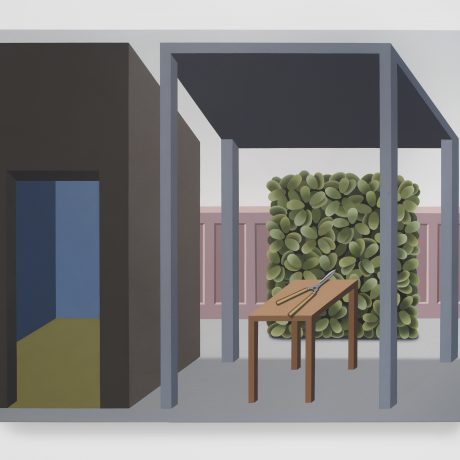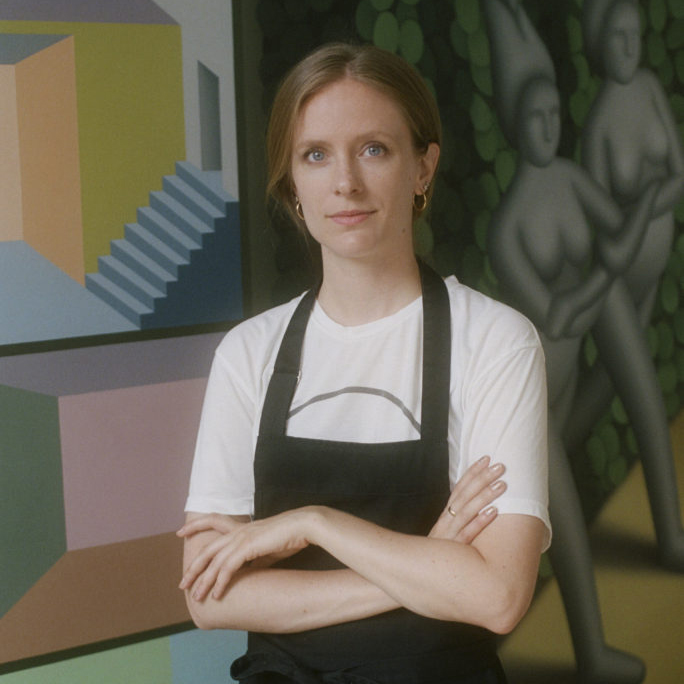
Mysterious statues, luscious greenery and strange domestic boundaries populate Emily Ludwig Shaffer’s paintings. Sliced up by walls, fences, hedges, windows, pools and more, the Brooklyn-based artist’s architectural spaces are informed as much by science fiction as by the histories of traditionally “feminine” crafts, such as weaving and gardening. One would be forgiven for thinking that these works were produced digitally, but they are actually the result of painstaking layers of oils, where smooth surfaces, soft shadows and razor-sharp, surreal visual planes coexist.
To coincide with a new exhibition with Françoise Grossen at L’Inconnue Gallery in New York, Shaffer discusses the art, architecture and the objects that have informed her practice.
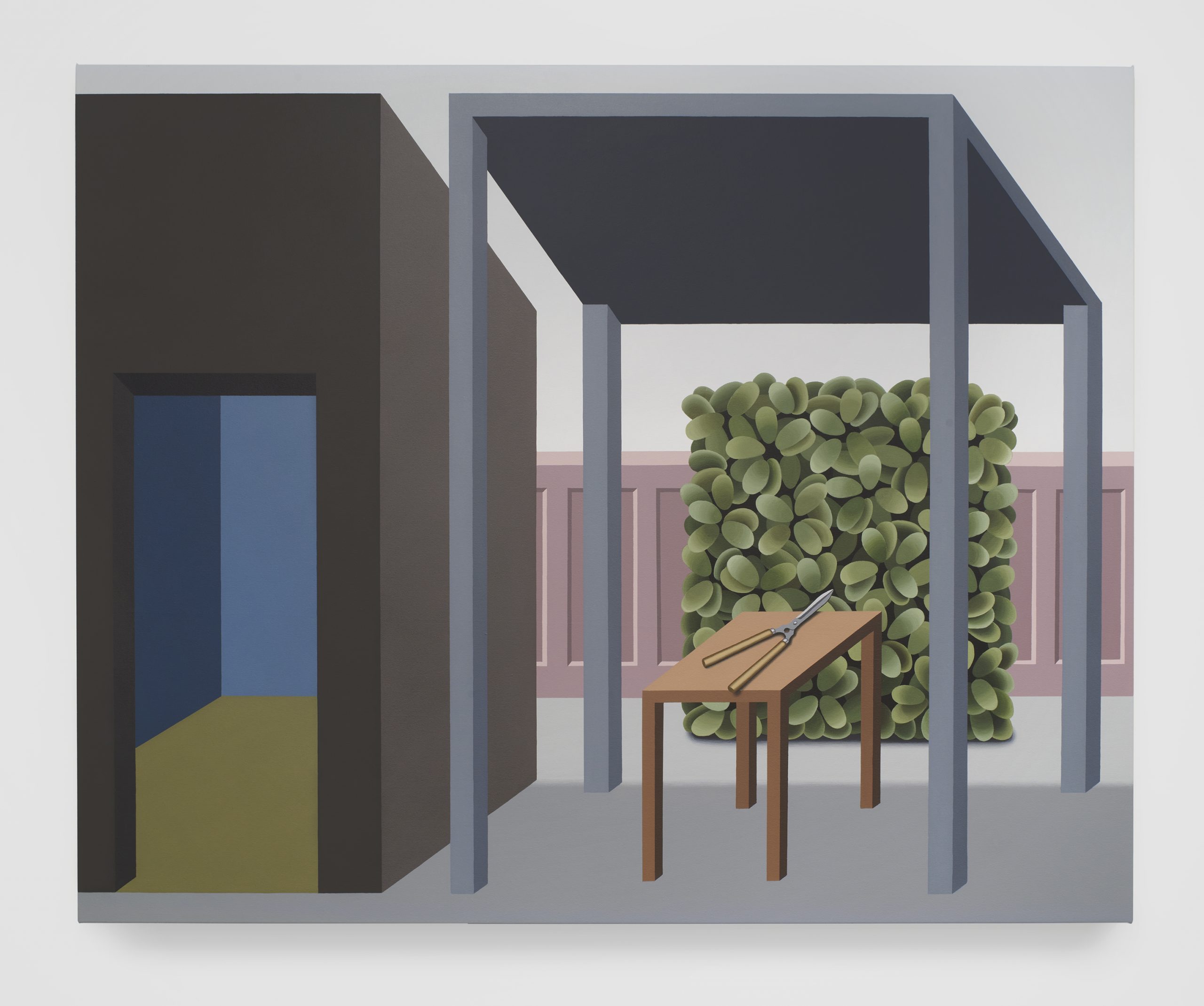
What was the first piece of art to have a profound impact on you?
My aunt made a large painting when she was in her twenties that use to hang at my grandparents’ house. It is a domestic scene where a couple is at a desk looking at paperwork. The man is sitting at the desk and the woman is wearing this textured long sleeved red dress leaning over him with her hand planted on the desk. An old-fashioned brass lamp is on the desk creating a perfect arc of light that highlights the couple’s hands on the documents. I imagine it’s a couple figuring out bills or taxes, but it’s so psychologically charged. I loved looking at it as a small child and I still do. It now hangs in my own living room.
“The statue figures are a way for me to explore the emotions and representations I find lacking in traditional representations of women”
Where did your interest in gardening and landscaping traditions come from?
I started painting potted plants about five years ago. For me they stood in as another metaphor for a vessel and/or the act of cultivating and nurturing. The potted plant metaphor expanded into gardens and landscaping traditions. I love visiting gardens and learning about various gardening philosophies, how much tension exists between these wild plants and the garden fantasies that we fit them into.
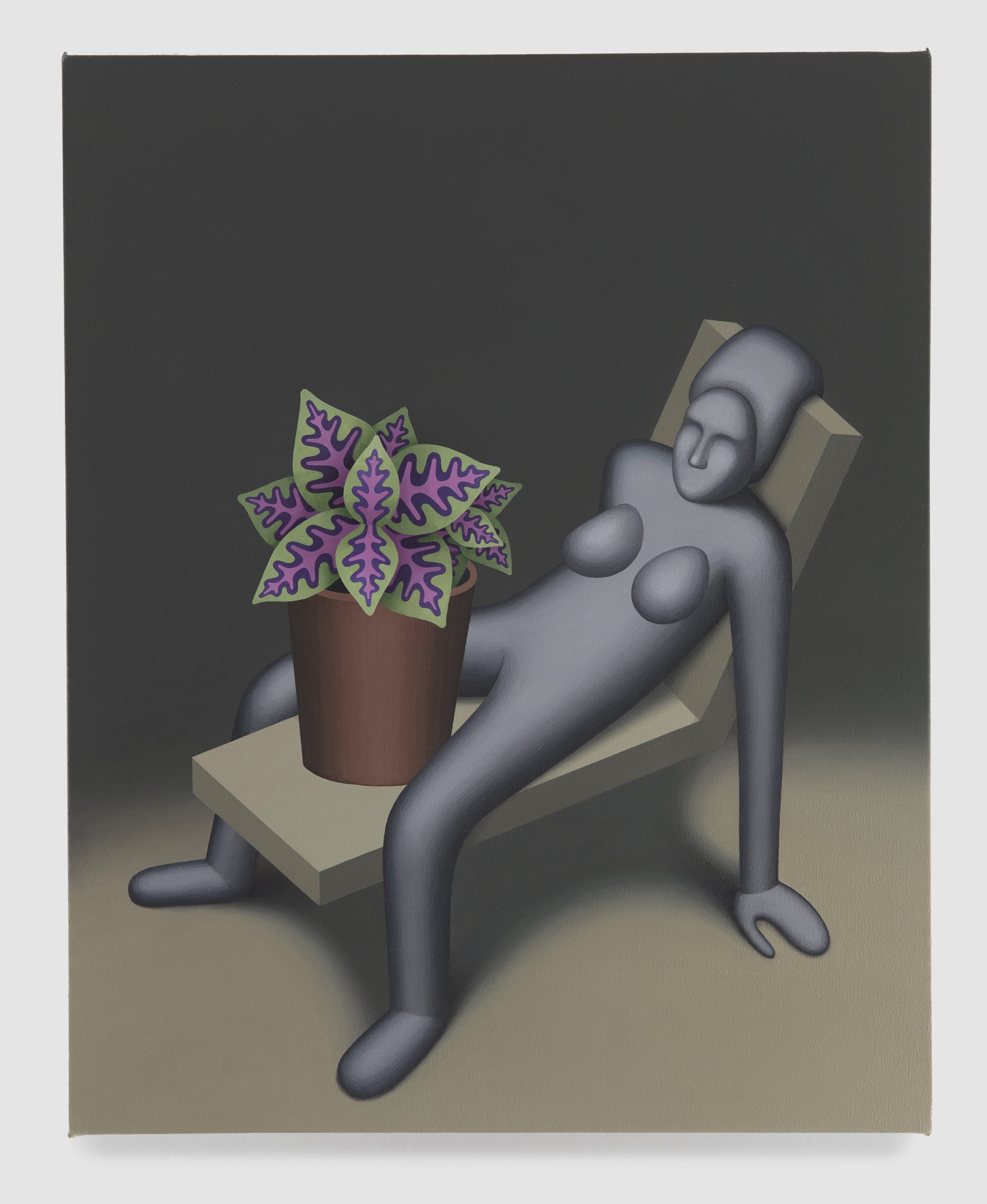
Why has statuary become such an important motif in your work?
Statues are these remnants of cultures that embody so much of how a society sees its people. The supple supine woman versus Aphrodite versus the fearless leader on his horse. As a woman, the statue figures are a way for me to explore some of the emotions and representations I find lacking in many traditional representations of women in those spaces. Many of my statues are women in states of refusal or boredom or solidarity with each other. They have an ambivalent relationship with their audience.
What city would you like to get lost in for 24 hours?
Rome. I’ve been lost there before and would love to be lost there again.
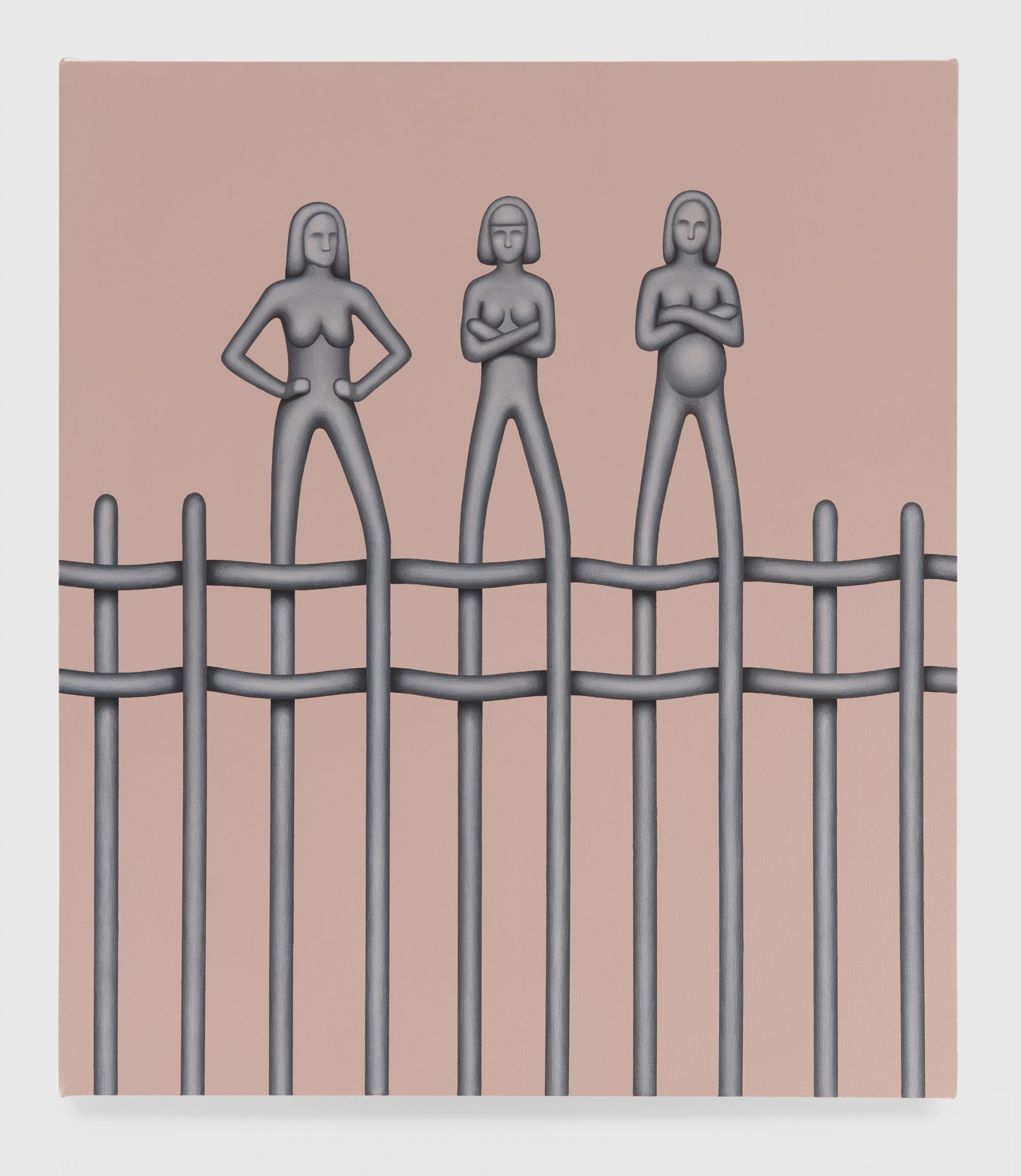
What is your first memory of visiting a gallery or museum?
Perhaps visiting the Natural History Museum in Cincinnati when I was very young. The museum is housed in a largely decommissioned Art Deco train station. It was actually designed by the same lead architect as Grand Central, and it has a huge half dome entrance hall. As a small child, the interior was overwhelmingly large, and the dome created very surreal acoustics where people who were far away could sound close and those who were close could sound far. I loved being in that space.
Emily Ludwig Shaffer and Françoise Grossen
At L’Inconnue Gallery, New York City, until 12 June
VISIT WEBSITE